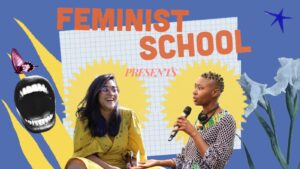by Bama Athreya
Consider who you think of when we ask you to picture a corporate leader, investor or factory manager. Now think about who you imagine assisting you at the service counter in a retail outlet, or modeling the clothing, or sewing the garments.
When it comes to gender, we are conditioned to recognize women as shoppers, retail workers, and factory workers. They are much less often the decision-makers. And to a certain extent that stereotype holds true, even though women make up about 80% of all apparel workers. That’s why a few years ago, we embedded a theory of change addressing Gender Justice into all of our work. Because we believe that to fundamentally transform fashion into a force for good, we must address this gender dynamic.
Gender dynamics affect men AND women, and of course gender non-conforming individuals. Our approach isn’t a ‘women’s empowerment’ approach. It’s not just about women; it’s about changing social dynamics. Gender Justice is the term we chose to describe this approach.
In our journey to understand and address gender, we have come to understand the complex, cumulative way in which the effects of multiple forms of discrimination – including racism, able-ism and homophobia- combine, overlap or intersect to reinforce gender inequity. In many of the countries where we work, the women and men who make, sell and buy our clothes may come from communities held back by deeply entrenched systems of discrimination and exclusion.
Our industry cannot thrive if this continues to be the case. So in 2018, we issued a Statement on Equity and Inclusion. We made a series of commitments in that statement. Importantly, one of our key commitments was to transparency- to communicate our progress as well as our setbacks. This is one of many updates we will share with all our stakeholders in the spirit of continued transparency.
In 2018, we commissioned a Benchmarking Report to help us evolve a comprehensive and holistic approach to gender, equity and inclusion both within our own operations, and in our grantmaking.
We are looking at this holistic approach both internally and externally, and both with respect to safeguarding and preventing harm and affirmatively supporting a workplace culture in fashion that embraces our differences and is truly inclusive. We are implementing an ambitious Gender, Equity and Inclusion Action Plan to both our internal operations and policies, our grantmaking. And in 2019, we continued our learning journey through a Gender Justice Learning Partnership.
Through the partnership, different teams within the foundation have been able to better understand gender justice. In Brazil, a seasoned gender and social inclusion expert gave a series of workshops to our staff and made field visits with partners to deepen our ability to apply a social inclusion lens to every activity we support. Learn more about the main insights and lessons learned as a result of the workshops in Brazil. In Mexico, our field office staff worked with a local and expert civil society organization (ILSB) to embed gender and social inclusion in their internal and external work, as well as convene civil society and donors to discuss how the foundation could help to progress the gender agenda in the country. Finally, some of our Mexican partners received support to embed gender justice into their own structures and the initiatives with C&A Foundation.
We still have much more work to do, but with this ambitious internal diagnostic of our workplace culture and grantmaking we will be able to refine our Gender, Equity and Inclusion Action Plan. And we’ll be celebrating some of our partners and our shared successes this year at the upcoming Women Funded conference in San Francisco- join us for the panel on Gender Equity in the Apparel Industry!
This article was originally published on 10 September 2019 on www.canadafoundation.org.
–
Bama Athreya is a Senior Advisor in Gender and Social Inclusion at C&A Foundation. She has more than twenty years’ experience on international labor issues, gender and social inclusion, and business and human rights.



